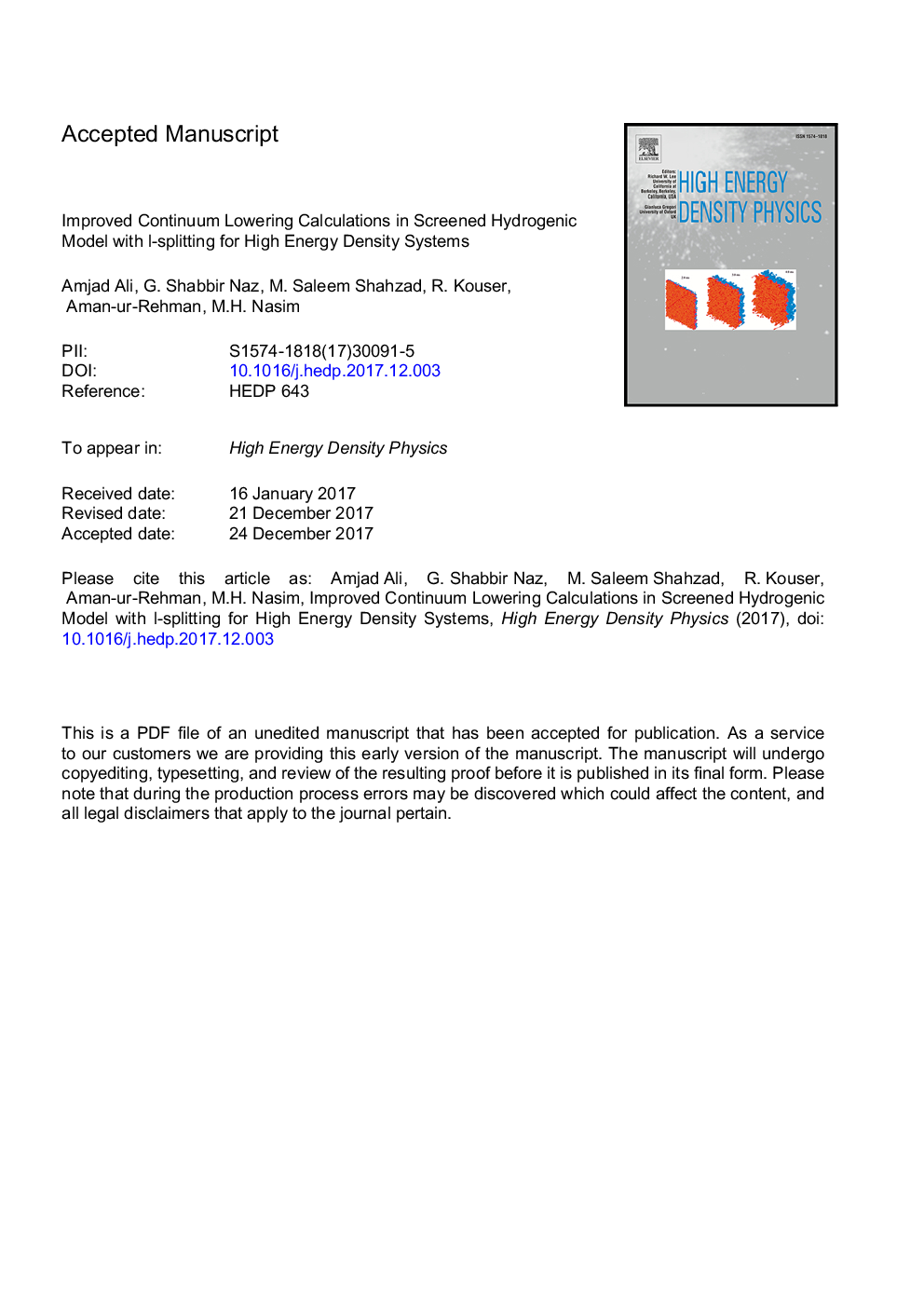| Article ID | Journal | Published Year | Pages | File Type |
|---|---|---|---|---|
| 8133475 | High Energy Density Physics | 2018 | 18 Pages |
Abstract
The energy states of the bound electrons in high energy density systems (HEDS) are significantly affected due to the electric field of the neighboring ions. Due to this effect bound electrons require less energy to get themselves free and move into the continuum. This phenomenon of reduction in potential is termed as ionization potential depression (IPD) or the continuum lowering (CL). The foremost parameter to depict this change is the average charge state, therefore accurate modeling for CL is imperative in modeling atomic data for computation of radiative and thermodynamic properties of HEDS. In this paper, we present an improved model of CL in the screened hydrogenic model with l-splitting (SHML) proposed by G. Faussurier and C. Blancard, P. Renaudin [High Energy Density Physics 4 (2008) 114] and its effect on average charge state. We propose the level charge dependent calculation of CL potential energy and inclusion of exchange and correlation energy in SHML. By doing this, we made our model more relevant to HEDS and free from CL empirical parameter to the plasma environment. We have implemented both original and modified model of SHML in our code named OPASH and benchmark our results with experiments and other state-of-the-art simulation codes. We compared our results of average charge state for Carbon, Beryllium, Aluminum, Iron and Germanium against published literature and found a very reasonable agreement between them.
Related Topics
Physical Sciences and Engineering
Physics and Astronomy
Astronomy and Astrophysics
Authors
Amjad Ali, G. Shabbir Naz, M. Saleem Shahzad, R. Kouser, Aman-ur-Rehman Aman-ur-Rehman, M.H. Nasim,
